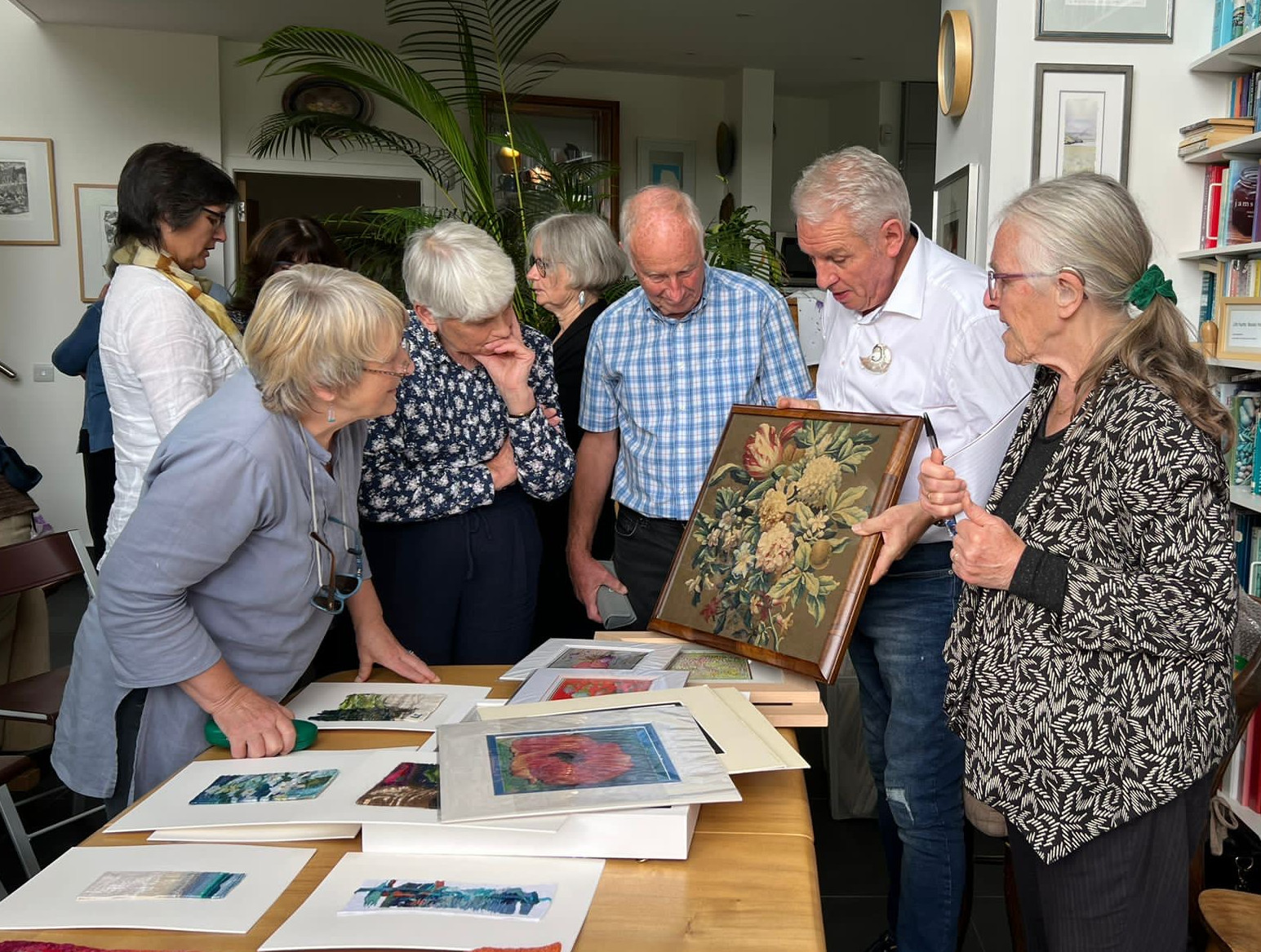

 In May 2021 Anna Wetherall wrote this blog post posing the question of whether there was an ongoing role for online tapestry weaving networks. There were limited responses to this - in fact only two, both of which were personal perspectives with one claiming great personal benefits from participating in Anna and Irene Evison's Nearly Wild Weaving online activities and the other suggesting more time was needed before they were ready to go down the online network route.
In May 2021 Anna Wetherall wrote this blog post posing the question of whether there was an ongoing role for online tapestry weaving networks. There were limited responses to this - in fact only two, both of which were personal perspectives with one claiming great personal benefits from participating in Anna and Irene Evison's Nearly Wild Weaving online activities and the other suggesting more time was needed before they were ready to go down the online network route.
In the past few months, I have been involved in helping to establish the BTG Eastern Regional Group. As coordinator of the group I also take part in the Regional Coordinators online meetings and some striking yet similar issues experienced by all the Regional Groups have emerged.
Meeting face-to-face presents real challenges from a geographical perspective - each of the Regional Groups covers large areas with many prospective members faced with hours of challenging travel to reach the location of meetings. All the groups use Zoom for virtual meetings in between the face-to-face ones, as a means of maintaining cohesiveness. However, whether face-to-face or on Zoom, no meeting encompasses the entire membership of a Regional Group with each one having a different constituency making it difficult to establish anything other than cursory relationships.
Another issue is around the focus of the Regional Groups - for some members the priority is in seeking opportunities to exhibit their work and so all their energy is put into locating venues and planning the events. For others, the opportunity to get together with other tapestry weavers and explore ideas, share skills, show work and gain encouragement is the prime motivation and they perhaps actively dislike the pressure of mounting an exhibition of work. These differing agendas can cause tensions between members which can also inhibit the development of the group as a whole.
Finally, there is the dichotomy of the very personal and insular nature of tapestry weaving activity versus the need to share what one is doing when engaging with a group.
The Waterline Project seems to have successfully overcome these issues: firstly, the focus of the project, front and centre, was the creation of hand-woven tapestries - it was expected to be an active, participative group with a planned output; the membership numbers were kept low and all the meetings were virtual with a commitment from those taking part to ensure they joined in; whilst the project was based on a common theme each weaver developed their own personal perspective on it and worked according to their own ideas; the planning of the exhibition aspect seems to have been undertaken thoroughly but not at the expense of time spent on reviewing and giving feedback on the weaving process.
So is the Waterline Project a model for how tapestry weavers might meet and successfully collaborate? Working virtually, collaborating at a distance for those unable to meet physically? Does it provide an insight into the ways in which the solitary, creative process of tapestry weaving might be enhanced through the sharing of ideas in either face-to-face or virtual meetings? Do post your ideas as responses to this blog - it would be good to hear what you think.
Comments
Anna Wetherell, 15th Jan 2024
Waterline was a fabulous project to be part of, out of which has come another project: Murmuration. Most of the group from Waterline have continued on, with the challenge this time being to collaborate over a coherent overarching design, then weaving closely related tapestries. Zoom is still required and works well, allowing continued liaison internationally. It has shown how collaboration is a challenge, requiring compromise as well as group effort, but the outcome should be fabulous - you can come to your own verdicts in Autumn 2024! Working and coming together as a group, whether face to face or virtually, facilitates learning from each other. Zoom permits this to happen over a wide geographic area, extending our community. Seeing tapestries in real life is always better than on the screen, but I find that working together online has created many opportunities and links that otherwise would not have been possible. Of course, our tapestries are still usually woven alone, so it's a mix of solitary and communal activity in reality. A positive balance?
Marion borthwick , 9th Sep 2023
I think there is a place for every kind of tapestry weaver. Those who seek guidance and reassurance that their work is going along the right lines, and those who want to work quietly under there own steam. I enjoy the feedback I get from both zoom and face to face meetings, which are not always possible to fit in to a busy lifestyle.
Eleonora Budden, 8th Sep 2023
Thank you Matty for this blog which reminded me of: At our last face to face meeting, the London Group set ourselves a challenge: to weave an irregular (asymetrical) flat or 3D shape, maximum 15 cm in any direction. I have nnow warped up a small frame and decided on the shape. To weaving now for our next face to face at Handweavers Studio on 28 October!
Paulette Furnival, 6th Sep 2023
I didn’t get accepted for Waterline - which in retrospect was probably for the best! - but I’d love to be part of a collaborative project. I think the process of working with other tapestry weavers, having deadlines (it’s all too easy to drift or procrastinate) and producing something as part of a group would be amazing to do.

Add your comment